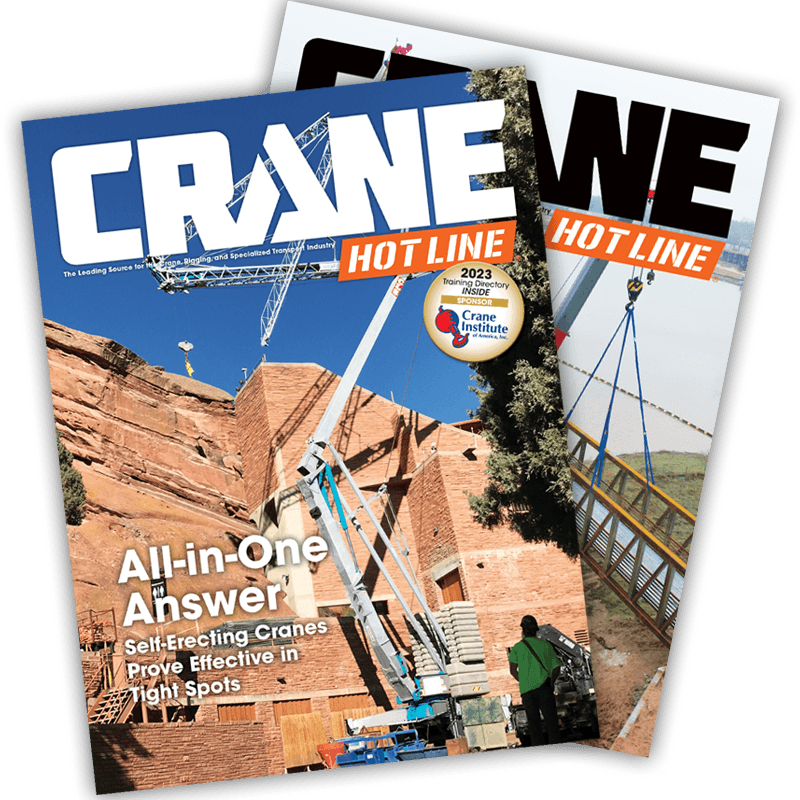Hydraulic Filters That Do More Harm Than Good
Brendan Casey
Brendan Casey has more than 16 years experience in the maintenance, repair and overhaul of mobile and industrial hydraulic equipment. For more information on reducing the operating cost and increasing the uptime of your hydraulic equipment, visit his web site: http://www.InsiderSecretsToHydraulics.com.

February 7, 2007 • Given that particle contamination of hydraulic fluid reduces the service life of hydraulic components, it would seem logical that a system can never have too many hydraulic filters. Well, not exactly. Some hydraulic filters can actually do more harm than good, and, therefore, their inclusion in a hydraulic system is sometimes misguided.
Pump inlet (suction) filters fall into this category. Inlet filters usually take the form of a 140 micron mesh strainer that is screwed onto the pump intake penetration inside the hydraulic reservoir. Inlet filters increase the chances of cavitation occurring in and subsequent damage to the intake line, as well as failure of the hydraulic pump. Piston-type pumps are particularly susceptible.
If the reservoir starts out clean and all fluid returning to the reservoir is filtered, inlet filters are not required since the hydraulic fluid will not contain particles large enough to be captured by a coarse mesh strainer.
I generally recommend removing and discarding inlet filters where fitted. The one possible exception to this rule is charge pump intakes on hydrostatic transmissions. When in doubt, consult the hydraulic pump manufacturer. If you are involved in the design of hydraulic systems, you should think twice before fitting hydraulic filters to pump intake lines.

Arguments for suction filters
However, there are some who might disagree with my recommendation to remove and discard the pump inlet filters. One person posed the following argument:
"The one thing a suction [filter] does that's worthwhile is keep out the trash that gets dropped into the tank during service. We've lost pumps to things like bolts that we know were not in the tank when it got built. The process of adding hydraulic fluid to the tank often doubles as the trash-installation function. The screens that are often installed in the fill neck usually get a hole poked through them so that oil will go in faster."
A couple of years ago, I was involved in a case where the seals failed in the swivel on a hydraulic excavator. This allowed the automatic greasing system to pump grease into the hydraulic reservoir. The grease clogged the suction filters, which subsequently failed. The wire mesh from the suction filters destroyed all four hydraulic pumps and several other components. Had suction filters not been fitted, it is likely that the grease would have eventually dissolved in the hydraulic fluid with minimal damage to any components.
My point is I don't use this example as an argument against fitting suction filters because grease should not be in the reservoir. Likewise, I do not consider trash exclusion to be a valid argument for fitting suction strainers because nuts, bolts, or similar debris also should not be in the reservoir.
The sloppy operators that allow trash to drop into the reservoir are the same operators that never change the suction filter or drain and clean the reservoir. Eventually, the suction filter will clog, and the pump will fail through cavitation. Therefore, with or without the suction strainer, the pump is destined to fail prematurely.
The correct solution is not to allow trash to get into the reservoir, which is fundamental to my recommendation to remove and discard suction filters where fitted. Excessive vacuum at the pump inlet caused by suction filters is a bigger threat to pump life, in the long run, than trash that shouldn't be in the reservoir in the first place.

The exception to the rule
While I make a point that all fluid returning to the reservoir should be filtered, there is one exception to this rule: the case drains of hydraulic piston pumps and motors. Connecting case drain lines to return filters can cause excessive case pressure, which has a number of damaging effects.
High case pressure results in excessive load on the lip of the shaft seal. This causes the seal lip to wear a groove in the shaft, which eventually results in a leaking shaft seal. The effect of high case pressure on in-line piston pumps is the same as excessive vacuum at the pump inlet. Both conditions put the piston ball and slipper-pad socket in tension during intake. In severe cases this can result in buckling of the piston retaining plate and/or separation of the bronze slipper from the piston, causing major failure.
Under certain conditions, high case pressure can cause the pistons of radial piston motors to be lifted off the cam during the outlet cycle. When this happens the pistons are hammered back onto the cam during inlet, destroying the motor.
Instead, the case drain line of piston pumps and motors should be returned to the reservoir through a dedicated penetration below minimum fluid level. Although hydraulic filters are not recommended on case drain lines, if a filter is fitted, then it should be generously oversized to minimize back pressure in the pump or motor case. When in doubt, consult the hydraulic pump or motor manufacturer.


